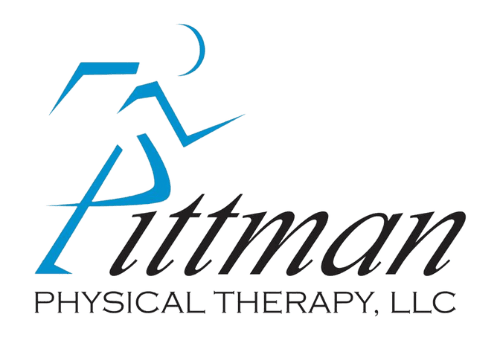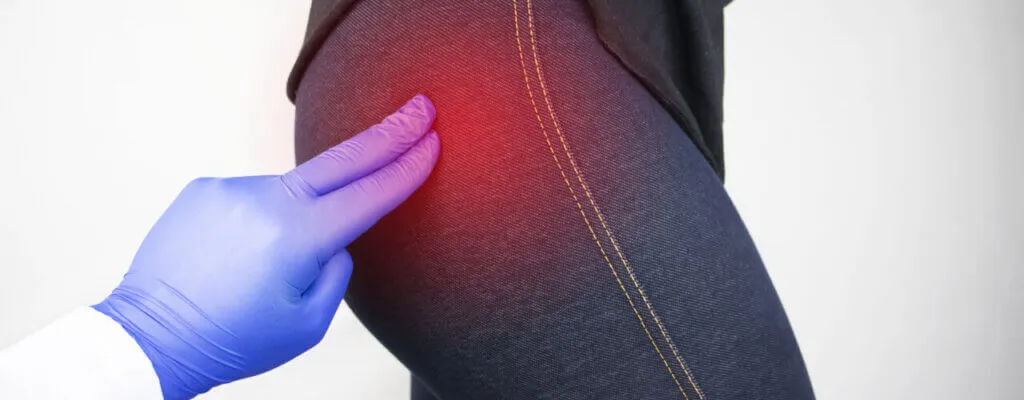Move with Ease Once Again with Physical Therapy Treatments for Hip and Knee Pain!
The knee is considered to be a hinge joint while the hip is a ball-and-socket joint. They are both complex joints with a network of muscles, tendons, ligaments, bones, and cartilage, all working together to keep you moving.
With these many moving parts, it’s not surprising that, as we age or engage in strenuous activity, we sometimes experience pain.
Hip and knee pain can be difficult to live with. According to the American Academy of Orthopaedic Surgeons, knee pain is a common condition resulting in 19.4 million pain-related visits to a physician’s office each year! If you suffer from hip or knee pain, it can make it difficult to do even the most basic daily activities.
Understanding the causes of hip and knee problems is often the key to effective treatment. Your physical therapist can help you reduce or even eliminate the amount of pain you’re experiencing if you’re struggling with hip or knee pain.
How can physical therapy help relieve hip and knee pain?
Physical therapy may offer a non-invasive solution for both hip and knee pain. Your physical therapist is likely to begin with an evaluation, in order to determine the cause of your pain. In the case of knee pain, the evaluation would probably focus on the area from the hip to the foot.
An evaluation of hip pain is also likely to include a spinal test. For both types of pain, the assessment may include a range of motion and strength measurements. Your physical therapist may also perform gait and mobility tests, in order to determine how to help you move around more easily and comfortably.
An individualized physical therapy program would then be created for your specific needs. The American Physical Therapy Association states that early rehabilitation for certain types of knee pain is associated with a lower use of opioids and knee surgery.
Various types of exercises are often used to reduce pain in the hips. Passive methods, such as icing or heat treatment, could also be used to eliminate pain. Sometimes soft tissues and joints in the hip or spine need to be manipulated to restore proper movement and to reduce pain.
A variety of exercises and stretches are also used to treat pain in the knee. Other treatments that your physical therapist may use include ultrasound or electrical stimulation.
Here’s what you can expect from some common treatments for hip and knee pain:
- Manual Physical Therapy – Hands-on techniques are used often in physical therapy to reduce pain in your hips and knees. This could include stretching exercises or a variety of massage techniques.
- Ice and Heat Therapy – A physical therapist may use ice packs to reduce swelling and inflammation. Heat is also commonly used during physical therapy to help increase mobility and reduce pain.
- Ultrasound Therapy – Ultrasound therapy can be used in physical therapy to provide soothing heat to deep tissues. A licensed physical therapist can also utilize ultrasound technology to easily identify specific areas of pain.
- Laser Therapy – Laser therapy has become much more popular in physical therapy for pain management. It can help improve the growth and reproduction of cells, increase circulation, and also reduce inflammation.
- At-Home Exercises – Did you know you don’t always have to be in a clinical setting to do physical therapy exercises? It’s true! Physical therapy techniques can be incorporated into a home exercise program that can become part of your daily routine.
Other forms of treatment for hip and knee pain
Surgery – Recovery from surgery can be painful and extensive. There’s always the chance of infection and sometimes surgery simply doesn’t produce the intended results. While surgery may be effective in some cases, it’s not without its drawbacks and should be used as a last resort.
Pain Medication – Prescription pain meds are sometimes used to treat knee and hip pain. Medication normally doesn’t solve the issue, but only temporarily reduces the pain. Medications, even over-the-counter meds, can be addictive and expensive.
So, why are you experiencing hip or knee pain?
Knee Pain – Injuries that include torn cartilage or damaged ligaments can cause knee pain. Fractures, tendinitis, and knee bursitis are all common knee injuries. Medical conditions such as arthritis or gout can cause mild to severe knee pain. You may be experiencing stiffness or swelling in one or both knees. It might be difficult to stand, walk, or fully straighten your knee. Sometimes knees will make popping or crunching noises.
Hip Pain – Hip pain can be caused by a variety of medical conditions as well as from certain injuries. Inflamed tendons from over-exertion or an athletic injury can cause temporary or chronic hip pain. Tendinitis, dislocation, sprains, and pinched nerves can all contribute to or be the cause of hip pain. Hip pain may also result from repetitive injuries or poor posture.
Kick hip and knee pain to the curb today!
It is important to follow all the instructions of your physical therapist, including any stretches or exercises that can be done at home, for the best results.
Physical therapy can help you find lasting relief from pain in the hip or knee. Please, contact Pittman Physical Therapy today to get started!



